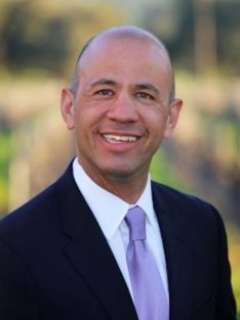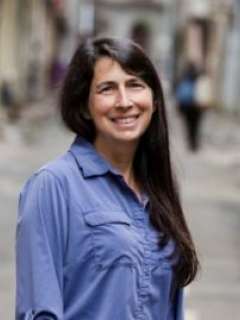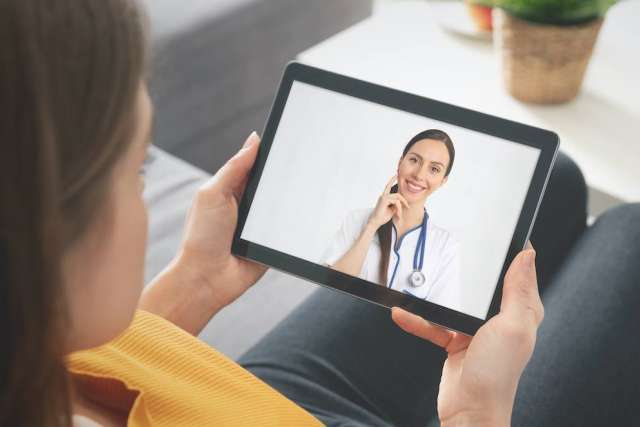What do injury prevention, youth and domestic violence prevention and health equity efforts have in common?
They are examples of the "curb-cut effect," solutions designed to serve the most vulnerable but which lead to large-scale benefits, says Michael Rodriguez, MD, MPH, professor and vice chair in the Department of Family Medicine at the David Geffen School of Medicine at UCLA.
Altering the environment by adding rails to bathrooms, or widening doorways for people who use wheelchairs for mobility makes the world more equitable for everybody – people with injuries, families with strollers, aging populations and people with poor balance.
“It’s an example of how equity lifts all boats,” Dr. Rodriguez says.

With injury prevention, Dr. Rodriguez uses the example of fire-resistant pajamas to prevent burns. While they were intended for children, they are also useful for people with sensory challenges, elderly people whose reflexes may be slower during a fire emergency and people with diabetes, who sometimes lack feeling in their legs and toes and may not notice burns.
As for domestic violence prevention, violence disproportionately affects marginalized groups, especially those who experience multiple forms of oppression, such as low-income women, LGBTQ+ and people of color. According to the Prevention Institute, violence undermines health by causing injury, disability and premature death.
Prevention efforts for injury, violence and inequities can mean offering stable housing and economic opportunity, as well as strengthening positive connections to family, community and quality schools.
By modifying an environment – whether it’s putting fire-resistant pajamas on an elderly parent or adding quality housing and education to low-income neighborhoods – these modifications not only lift up the groups for which they were intended, they also promote equity for all.
These, Dr. Rodriguez says, are examples of the “curb-cut effect.”
Curb-cut origins
Rooted in disability advocacy, the curb-cut concept originated in the early ‘70s with the “Rolling Quads,” a coalition of University of Berkeley students who used wheelchairs for mobility. One night in 1971, they set out with their personal care attendants and busted up curbs to build their own ramps.
Curb cuts are slopes cut into the corner of the curb to connect the sidewalk to the street. They help people who use wheelchairs for mobility, but also help people pushing strollers and pulling luggage, have made it easier for elderly people to cross the street and allow people of all ages and abilities to scoot and skate with ease.
Ed Roberts, a political science graduate student, pioneer for disability rights and leader of the Rolling Quads, assembled the group and insisted on building curb cuts on every street corner in Berkeley.
The Rolling Quads advocacy and action led to the launch of the Physically Disabled Students Program and a motion from City Hall calling for curb cuts within all major commercial areas.
Today, there are several practices and policies that are intended for one group but uplift many. Some examples include: seatbelts, bike lanes, voice activation tools such as Siri and Alexa, grocery delivery and more.
Take, for example, subtitles or captions, which were created for people who are deaf or hard of hearing. Subtitles also benefit people watching in noisy or quiet environments, language learners and people who have difficulty processing sounds.
Another example is telehealth, which was intended for patients who live in rural areas. It became incredibly useful during the COVID-19 pandemic when elective surgeries, in-person procedures and treatments were cancelled due to preservation of resources and space for COVID-19 patients.
Prior to the pandemic, less than 1% of Medicare primary care visits were provided via telehealth. By April 2020, nearly half (43.5%) of Medicare primary care visits were provided via telehealth. One major barrier to the expansion was limited reimbursement for telehealth services. This changed in March 2020 when Medicare exercised its 1135 waiver authority which relaxed the rules to ensure health care services were available to meet patients’ needs, and widened the reimbursement for care for services.
Another useful example of the curb-cut effect in health care is the Buzzybee, a tool that distracts patients receiving a vaccine. It was meant for children and people with intellectual and developmental disabilities, but can help people with anxiety disorder or fear of needles.
Jody Heymann, MD, PhD, founding director of the WORLD Policy Analysis Center and distinguished professor at the UCLA Fielding School of Public Health, says the curb-cut effect applies to universal design.
“How do we design all the areas in which we live, work, play and study so that they are accessible and fully inclusive of every person?”
One example she gives is technology.
“There is now amazing software that exists that does closed-captioning at conferences, in all languages, for people who are deaf. People speak in one language and the captioning comes across in dozens of languages of whoever's reading,” she explains. “That's incredibly powerful in terms of access and inclusion at global meetings.”
Similar technology allows the WORLD Policy Analysis Center to develop a website available in multiple languages, reaching an audience spanning 200 countries and territories.
Technology, she says, has potential to make our world more inclusive on many dimensions.

“Universal design goes beyond disability. When we take approaches that are imbued with a fundamental belief in equality of all people, it has widespread benefits,” Dr. Heymann says. She points to inclusion across religious beliefs and non-belief as an an example.
“Many universities require employees take vacation over Christmas. But we are a country of many religions, many belief systems, people with religious faith and people without.”
She says if the policies were changed to be more inclusive, so that people could take any two weeks off, that would mean that people of other religious faiths could take time to celebrate other holidays.
“If people needed extra time to be with family members elsewhere, they could take it, or if people wanted to do a special two-week training program during that time, they could do that too,” Dr. Heymann says.
The goal, she says, is to find ways to build a more equitable world, inclusive of all humans.
Trauma-informed care
In the early '80s and '90s, Dr. Rodriguez was based at the Trauma Foundation as part of a joint Stanford/University of California, San Francisco program. There, he witnessed how the prevention of traumatic injuries – whether related to violence, firearms, burns, excess alcohol use, etc. – led to widespread impacts for those who were most at risk as well as the general population.
“We were working to reframe violence from being seen as a criminal justice problem to a public health issue,” he says.
The program was housed in San Francisco General Hospital. One floor below their office was the Family Violence Prevention Fund, which aimed to help health care professionals in the emergency department who were struggling to support survivors of domestic and sexual violence.
“The Fund invited the Trauma Foundation in and described how they realized that holding the hands of survivors in the ER, while important, was not enough,” he says.
Dr. Rodriguez says he developed programs to help educate doctors, nurses and other health professionals on how to address intimate partner violence and provide trauma-informed care.
“Trauma-informed care supports all patients by assuming that most patients have a history of trauma,” Dr. Rodriguez says. “From this perspective the clinical setting shifts from one that judges and blames the victim by saying, ‘what is wrong with this person’ and instead asks, ‘what happened to this person?’”
Creating a safe environment for people who have experienced trauma includes keeping parking lots or structures well-lit, keeping noise levels low in waiting rooms and using welcoming language on signage. In the end, these modifications create a welcoming environment for all patients.
For the curb-cut concept to take effect on a mass scale, we have a “responsibility to address, minimize and eliminate barriers” to equity and inclusion, Dr. Rodriguez says.
“Our general approach has been to look at these different sectors as individual and independent ones, but that limits our ability to move forward as a society,” he says.
“Realizing that these systems are interrelated helps us align our vision and coordination. This way everybody benefits and the impact is magnified.”
From affinity groups and student organizations such as the Disabilities and Chronic Illness student organization, to the Office of Health Equity, Diversity and Inclusion and Office of Justice, Equity and Inclusion, numerous efforts to build a more inclusive and equitable culture are underway at UCLA Health.
The newly launched HEALS Curriculum at the David Geffen School of Medicine includes a Global Health Equity Pathway which supports first-year medical students interested in global health projects, research, public health programming, policy and advocacy.
While this pathway benefits the students, it also contributes to a more equitable future. Students take their learnings and have the ability to improve policy and public health programming. They also develop mentorship-style relationships with faculty and various networks, further expanding the knowledge gained and leading to more equitable care for patients across the globe.
Also this year, UCLA Health launched VidaTalk, an iPad app to help patients who may not be able to communicate. The app was originally created for treatment-induced communication impairment such as intubation, but can also help patients who may encounter other hurdles such as language barriers and verbal disabilities. VidaTalk provides a number of languages, knows 100 simple phrases, allows typing and drawing and, ultimately, gives patients a sense of autonomy and dignity.
Learn more about the other health equity, diversity and inclusion efforts underway at UCLA Health.



